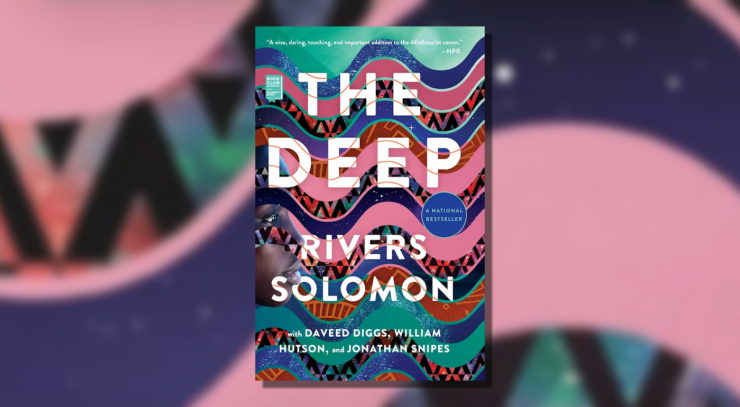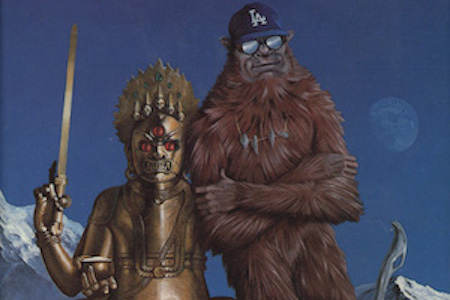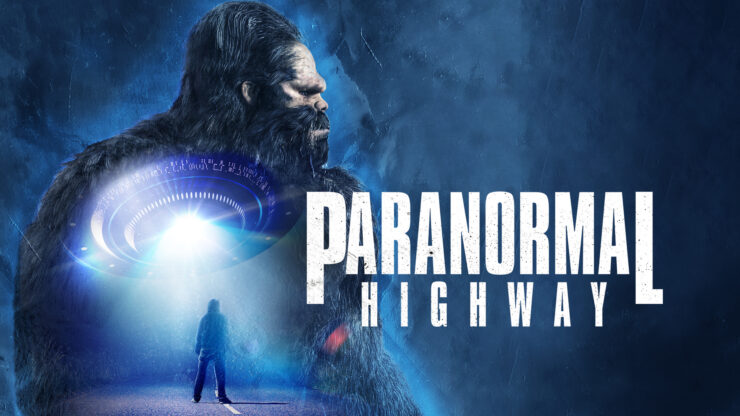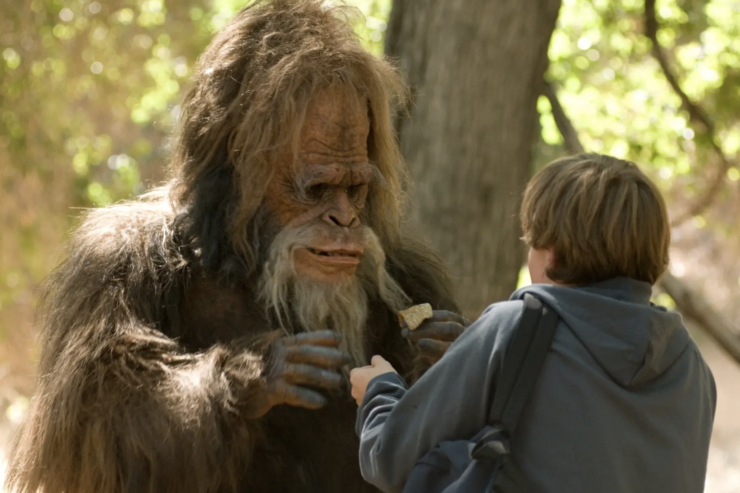Rivers Solomon’s The Deep is the prose portion of a collaboration with the band clipping, which in turn took its inspiration from another band, Drexciya. All of the collaborators openly acknowledge their debt to the ones who came before—which in its way is an echo of the song/novella itself. While the novella is a powerful piece on its own, it’s even more so in its full context.
The first principle of the worldbuilding is one of the great atrocities of the Middle Passage—the route of the slave ships from Africa into the Americas. Women who were found to be pregnant were thrown overboard and left to drown. What if, the collaboration asks, that was not the end? What if, although the mothers drowned, the children were able to be born into the water?
A fetus does not breathe air until it’s born. If somehow it can continue to live in water as it lived in amniotic fluid, if by some power or magic of the ocean it can be transformed into a creature of the sea, what happens then? How does it live?
The answer in both song and story is that the first children of the sea emerged as mermaids—finned, scaled, tailed, but mammalian in that they were fed on the milk of the whales who saved them as they came forth from their mothers’ bodies. Whales nurtured them, kept them alive, gave them the concept of language and therefore of sophisticated communication. As they grew and multiplied and their culture evolved, they discovered what they were and where they had come from. They understood both the horror and the hope of their origins.
But over time, through six hundred years of living and dying, building cities and civilizations and seeing them crumble or be actively destroyed through war with the “two-legs,” their human ancestors and cousins, they fled the pain of memory. They chose to forget—all but one, a chosen one, their historian. That one carried the memories for them all.
Solomon’s novella begins near the end of the saga. Yetu is the last of the historians, and not by her own choice. She was chosen for her extreme sensitivity, taught by her predecessor, and burdened with the full weight of her people’s history.
Her duty is to remember. Every year, once a year, her people come together to share the memories. For a few days or weeks, they share the burden, until it slips away again and falls once more on the historian.
Yetu hates it. She dreads remembering and she dreads sharing it. She wants so badly to be rid of it that she tries to commit suicide by shark, only to be rescued by her amaba, her loving and nurturing and softly relentless mother.
This time, when the gathering is complete and the memories have been shared, Yetu runs away—all the way to the surface, where she traps herself in a tidal pool off an island inhabited by two-legs. There she learns a great deal about herself, her people, and the two-legs; and she finally, conclusively grows up. In the process she finds a way to reconcile the pain of memory and the unfairness of forcing one person to carry it all while everyone else lives a life free of care.
There is so much here. The history of the slave trade in the Caribbean, and the atrocities it committed against enslaved people; the horrors of colonialism and white supremacy; personal and generational trauma and the ways in which people try to cope; ecological disaster and climate change; the power of the ocean and the creatures that inhabit it; and after all, in the end, when all seems lost, the nature of hope.
Yetu presents as a classic fantasy character, the chosen one who wants nothing more than to be un-chosen. She learns and grows and matures, and as one expects of the trope, she finds a way to save the world.
Mermaids here tend more toward the alien and the piscine than the Ariel-style pretty girl with a fish’s tail. It’s possible, we’re told, to see a resemblance between Yetu and the two-legs she meets, but the latter at first perceive her as a strange variety of fish. She’s hairless, scaled, with dagger-sharp teeth; her forelimbs are fins rather than arms and hands, though there seem to be webbed, vestigial fingers. She doesn’t attempt to leave the water for the land; she never sacrifices her tail or transforms into a human. She is what she is, without alteration.
Except for one thing. Yetu’s people have lived for generations in the deep sea. She is the first in many years to venture to the surface. There she discovers that, like Del Toro’s Amphibian Man and Anderson’s mermen, she has two separate sets of breathing apparatus. She can, with effort, shift from water to air and back again.
Buy the Book
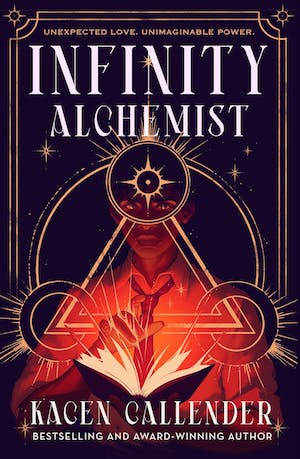

Infinity Alchemist
So far we’re well within the boundaries of traditional mermaid lore. But Solomon takes us in a few new (at least to me) directions. Yetu’s concept of language goes far beyond the spoken word. As a creature of the deeps, she perceives and communicates through her whole body. Her whole world is communication: vibration, water pressure, movement of water around her and against her. She has capabilities similar to those of the electric eel; she can generate and manipulate electricity.
That last ability makes it possible for her people en masse to manipulate the ocean and the atmosphere above it. They can form hurricanes and wield them as weapons of war and aggression. In that respect they resemble the human women who curse Monique Roffey’s mermaid, Aycayia, but the powers are reversed. It’s the mermaids who wield the weather against humans.
One more thing Solomon does that mermaid lore that I’ve seen hasn’t done. Their mermaids are hermaphroditic. Some use the pronouns she/her, others he/him, and some are they/them, but that’s a matter of personal choice. Sexual encounters can occur between as many as five people; they’re not confined to the basic binary.
It’s a little disconcerting how radical that seems. Our culture is so very fixated on either/or, one/zero, male/female. Even where it acknowledges that gender is a continuum rather than a toggle switch, it still tends toward sex as pairing or coupling. It’s extremely rare to see poly relationships, and even rarer to inhabit the viewpoint of a being who is truly nonbinary.
There’s an element of magic here, a touch of magical realism in the mermaids’ origins, but the science-fictional aspects are at least as strong. This is a truly contemporary fusion of elements, and a masterful combination of tropes both familiar and unfamiliar.










